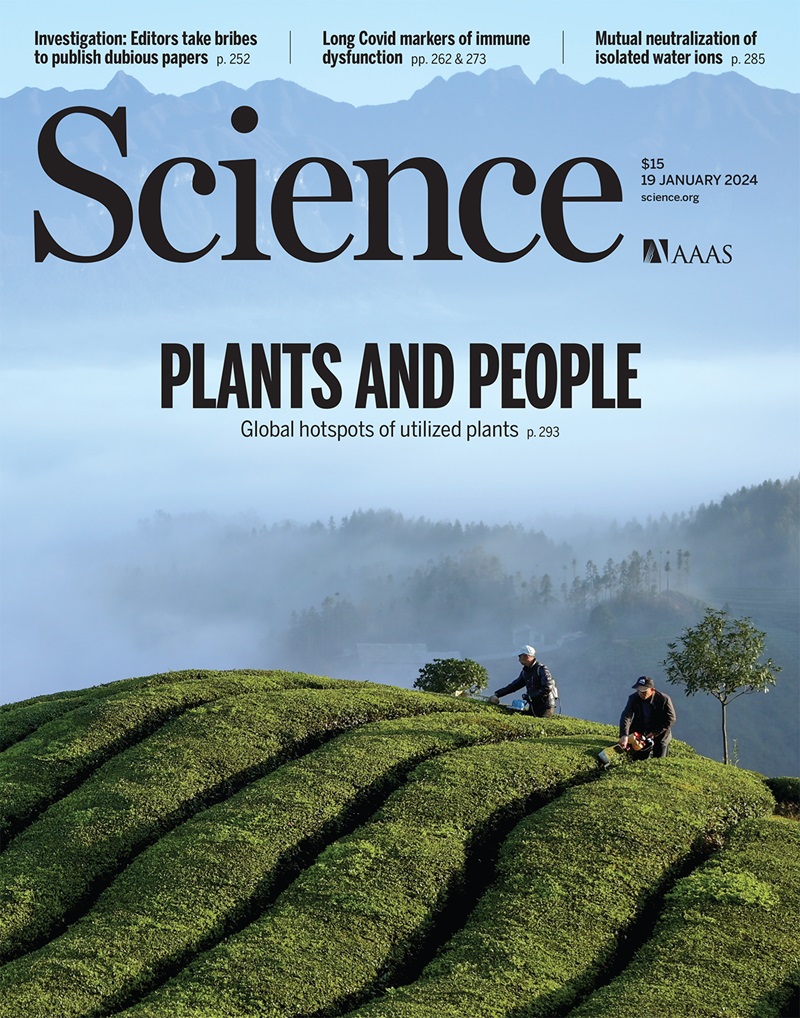促进RAS与PI3Kα结合的分子胶可以在没有胰岛素的情况下促进葡萄糖摄取
IF 45.8
1区 综合性期刊
Q1 MULTIDISCIPLINARY SCIENCES
引用次数: 0
摘要
在探索控制糖尿病患者血糖浓度的策略时,我们发现了所谓的分子胶D223和D927,它们在缺乏胰岛素的情况下促进葡萄糖的摄取。它们通过提高磷酸肌苷3-激酶α (PI3Kα)催化亚基p110α与典型小鸟苷三磷酸酶RAS蛋白以及与RRAS、RRAS2和MRAS的结合亲和力三个数量级而起作用。这些化合物结合到p110α的RAS结合结构域,使PI3Kα的二级结构稳定在RAS结合构象中,并与RAS残基酪氨酸-40和精氨酸-41形成直接相互作用。在体内,D927模仿胰岛素的作用:它迅速降低血糖浓度,增强正常和Zucker脂肪大鼠的葡萄糖代谢,改善1型和2型糖尿病模型中的高血糖,甚至在胰岛素缺乏的糖尿病动物中也是如此。本文章由计算机程序翻译,如有差异,请以英文原文为准。
Molecular glues that facilitate RAS binding to PI3Kα promote glucose uptake without insulin
While exploring strategies to control blood glucose concentrations in diabetes, we identified so-called molecular glues D223 and D927 that promote glucose uptake in the absence of insulin. They act by increasing the binding affinity of phosphoinositide 3-kinase α (PI3Kα) catalytic subunit p110α to canonical small guanosine triphosphatase RAS proteins and to RRAS, RRAS2, and MRAS by three orders of magnitude. The compounds bind to the RAS-binding domain of p110α, stabilizing the secondary structures of the PI3Kα in a RAS-binding conformation and forming direct interactions with RAS residues tyrosine-40 and arginine-41. In vivo, D927 mimicked the effects of insulin: It rapidly lowered blood glucose concentrations, enhanced glucose metabolism in normal and Zucker fatty rats, and improved hyperglycemia in models of type 1 and type 2 diabetes, even in insulin-deficient diabetic animals.
求助全文
通过发布文献求助,成功后即可免费获取论文全文。
去求助
来源期刊

Science
综合性期刊-综合性期刊
CiteScore
61.10
自引率
0.90%
发文量
0
审稿时长
2.1 months
期刊介绍:
Science is a leading outlet for scientific news, commentary, and cutting-edge research. Through its print and online incarnations, Science reaches an estimated worldwide readership of more than one million. Science’s authorship is global too, and its articles consistently rank among the world's most cited research.
Science serves as a forum for discussion of important issues related to the advancement of science by publishing material on which a consensus has been reached as well as including the presentation of minority or conflicting points of view. Accordingly, all articles published in Science—including editorials, news and comment, and book reviews—are signed and reflect the individual views of the authors and not official points of view adopted by AAAS or the institutions with which the authors are affiliated.
Science seeks to publish those papers that are most influential in their fields or across fields and that will significantly advance scientific understanding. Selected papers should present novel and broadly important data, syntheses, or concepts. They should merit recognition by the wider scientific community and general public provided by publication in Science, beyond that provided by specialty journals. Science welcomes submissions from all fields of science and from any source. The editors are committed to the prompt evaluation and publication of submitted papers while upholding high standards that support reproducibility of published research. Science is published weekly; selected papers are published online ahead of print.
 求助内容:
求助内容: 应助结果提醒方式:
应助结果提醒方式:


